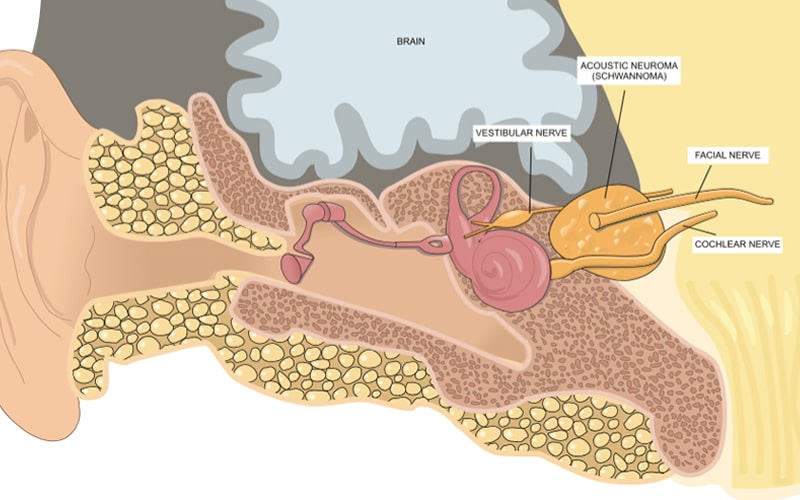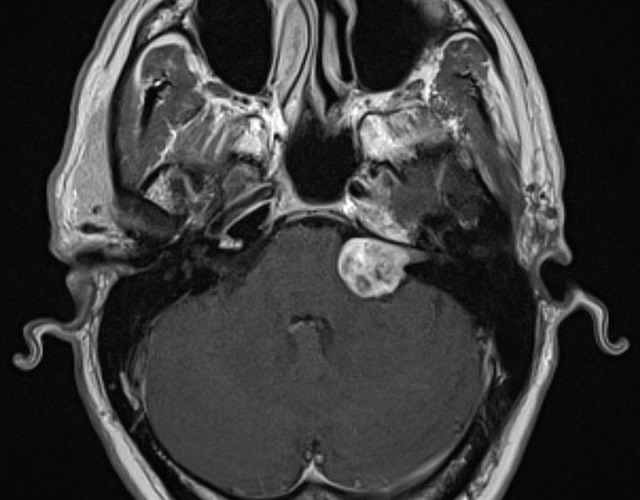Acoustic Neuroma Explained
Acoustic Neuroma occurs in two forms, either a sporadic form or associated with an inherited syndrome called neurofibromatosis II (NF2). The large majority of these tumors, over 95% of all cases, are sporadic. This means that over 95% of all tumors occur as an isolated lesion, not associated with any other condition or any other tumor.
Acoustic Neuroma is a benign tumor. This means that the tumor does not spread to other areas of the body, such as malignant tumors do. Unfortunately, though it is benign, it does grow locally and affects very important structures in the area. As the tumor is in the intracranial cavity, there are nerves and other parts of the brain that can be severely impacted by the tumor as it grows.
Patients with Acoustic Neuroma typically have a single tumor that begins within the internal auditory canal (IAC). The IAC is a bony tunnel that carries three nerves from the brainstem to the areas they provide information to, in this case either the inner ear or the facial muscles. The three nerves that travel through this tunnel are the facial nerve (cranial nerve (CN) 7), the vestibular, or balance, nerve (CN 8), and the cochlear, or hearing, nerve (CN8). Acoustic Neuroma typically arise from the vestibular nerve (CN 8). These tumors usually begin from the nerve as it travels through the IAC from the brainstem to the balance organ of the inner ear.

As these tumors grow, they are confined by the bony tunnel in which they begin. They are not able to grow outward, toward the solid bone of the skull that houses the inner ear organs. Therefore, as these tumors grow, they grow inward towards the brain that is soft and easily compressed. Acoustic neuromas typically grow very slowly, but as they expand they extend out of the internal auditory canal and begin to compress the cranial nerves that regulate facial movement, facial sensation, hearing, balance, and speech and swallowing. Patients often report having headaches in addition to the symptoms of the earlier stage acoustic neuroma.
As the acoustic neuroma grows, it can compress the cerebellum and even the brainstem itself. Although an acoustic neuroma is benign and not cancerous, it is not harmless. The pressure of the neuroma against healthy brain tissue of the cerebellum and brainstem may affect coordination and motion and lead to a worsening of headaches. It can also lead to numbness in the face on the affected side, as the nerves controlling facial movement are compressed.
Left untreated, an acoustic neuroma can block the flow of cerebrospinal fluid and cause hydrocephalus, which can in turn lead to severe vision problems and difficulty breathing and swallowing. Fortunately, most patients seek treatment long before an acoustic neuroma reaches this stage. It is imperative that Acoustic Neuroma tumors are managed appropriately after diagnosis. While there are options in treatment of this rare tumor, it is of utmost importance that all considerations be taken into account so that the correct next steps for the specific tumor and patient are chosen. Also, it is critical that the various management options for this rare tumor are considered and that the practice and providers have experience with all the modalities to allow best outcomes.

